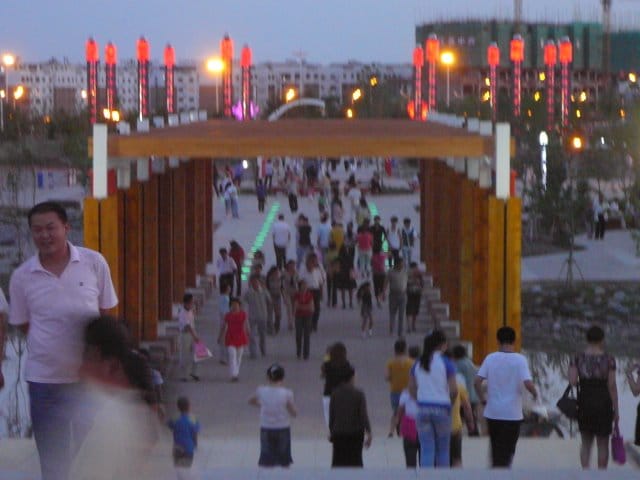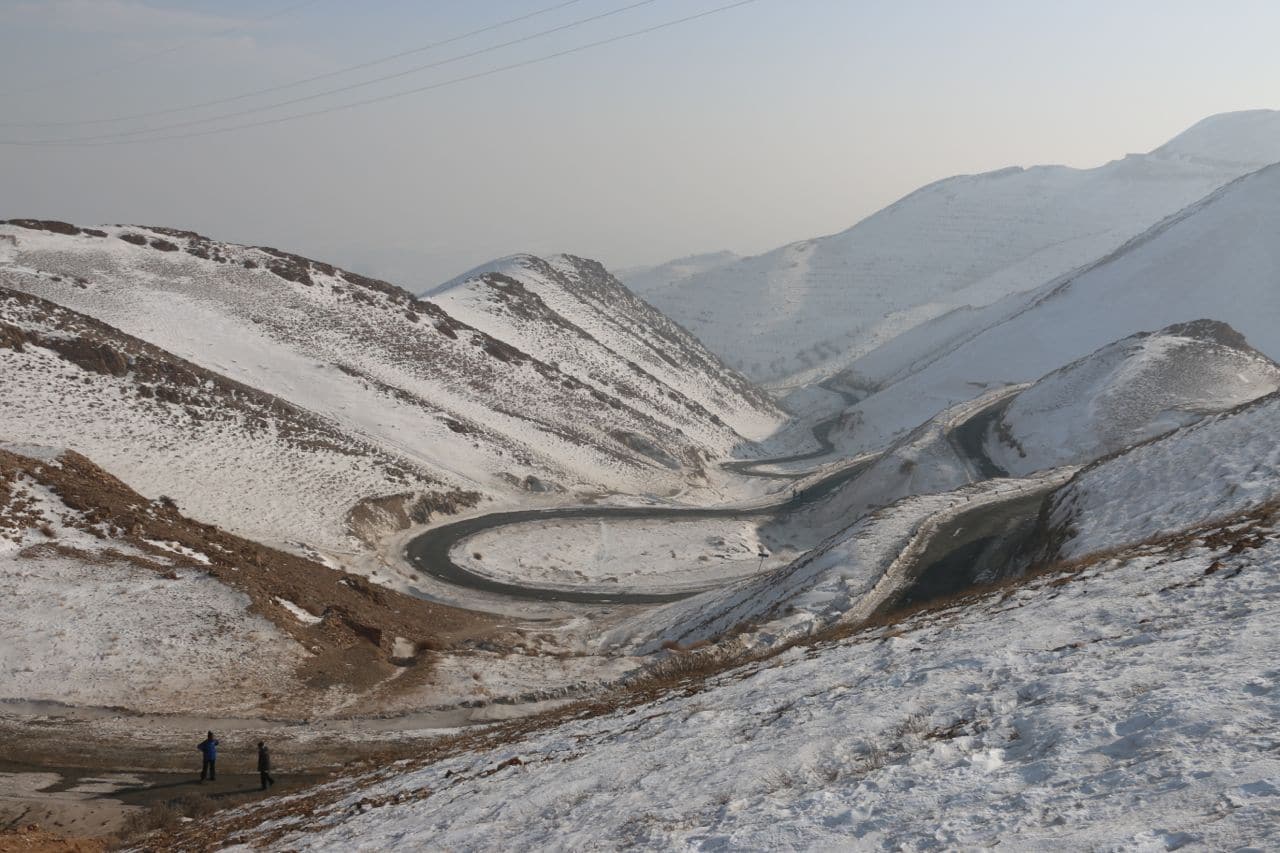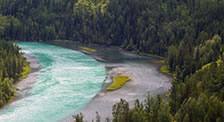Visiting Xinjiang’s Jurassic Park (aka “Tianshan Safari Park”)
Driving our car through the high, double gates of the Xinjiang Tianshan Safari Park, it was hard not to think that we had just entered Jurassic Park. The guard tower was vacant and not a single park ranger was in sight.
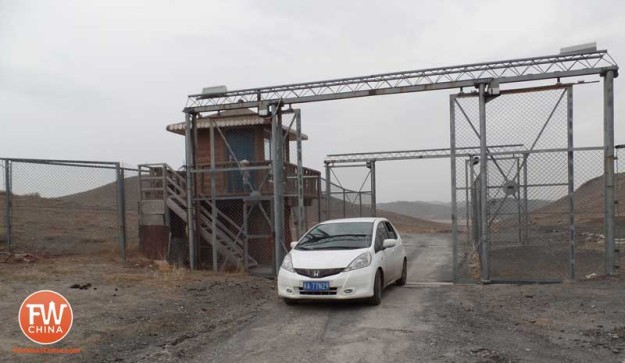
My family and a couple friends had decided to make our first visit to this park an hour outside of Urumqi, none of us quite sure what to expect.
Previously, the zoo in Urumqi had been located in the south of town until September 2005 when it was moved to a massive tract of land at the foot of the Tianshan range.
The move was meant to give the animals more space to roam and the shiny new park was immediately hailed as a “AAAA Tourist Destination” by local authorities.
I had driven our car for a little over an hour to reach the park and by the time we arrived we were all a bit car sick. Chinese construction tends to age like dogs do and the 10 year old road that led from the highway to the park entrance was in such disrepair that we might as well have been off-roading.
The sign that greeted us a mile before the park entrance hadn’t held up any better.
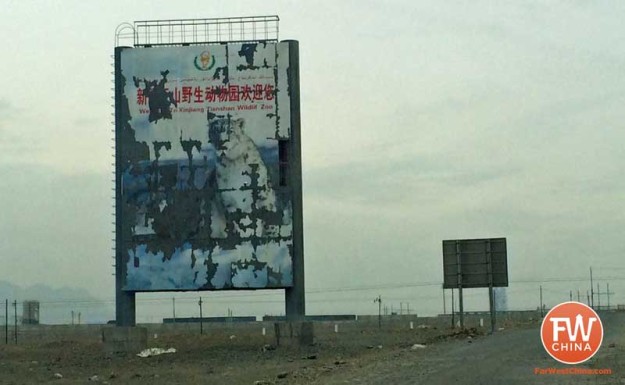
We were beginning to wonder if this park had even survived a decade.
Entering the Tianshan Safari Park
To our relief, when we finally arrived at the tourist center we were glad to see that at least our car wasn’t the only one in the parking lot. I got out and entered the “Tourist Center”, passing through a line of metal detectors that weren’t in use anymore.
At one point this large space must have been useful for something but now it just made the whole place feel vacant.
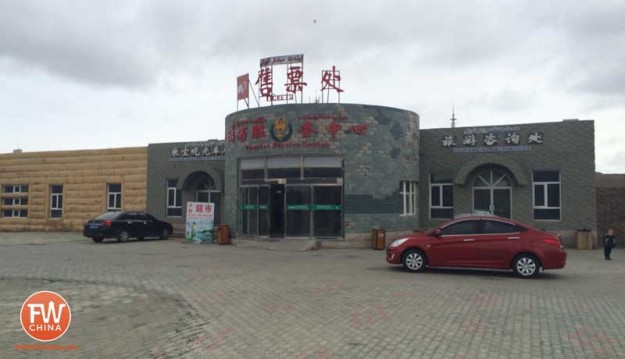
A woman who looked bored out of her mind took my money and handed over the tickets. After exiting back through the useless metal detectors I started the car and we entered the park.
The Xinjiang Tianshan Safari Park covers an area of 75 square kilometers that is only a kilometer in width stretching far north toward the Tianshan.
They boast over 170 different kinds of animals in the park and for a brief period in 2008 even housed a panda. Paved roads crisscross the area and since it is impossible to walk the entire park a shuttle is available to ride for a fee.
Thankfully, we had access to our own car so we were able to enjoy the park at our own pace. We drove for approximately a kilometer without a single animal, car or human being in sight.
And then we came upon the Jurassic Park gate.
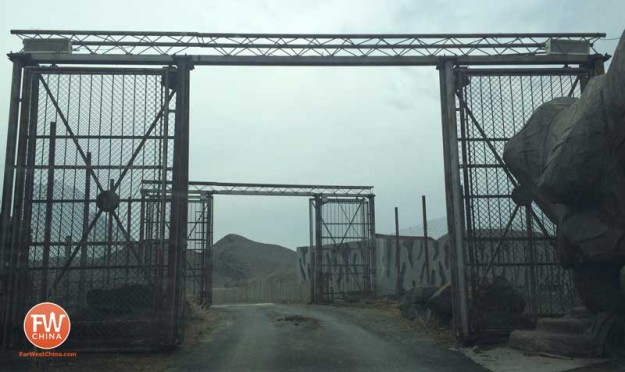
We didn’t have to wait for it to open. In fact, it never even closed behind us.
Finally, we began to see animals. First it was a pack of beautiful Przewalski horses grazing in the open field followed by a large group of what seemed like very angry ostriches.
Before long we had seen zebras, camels, llamas and other such animals populating the fields, sometimes behind fences and other times in the open.
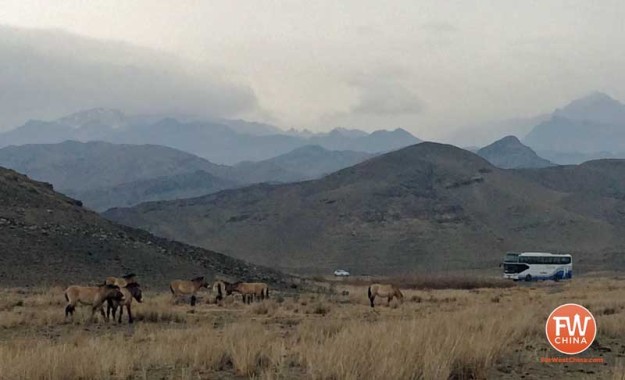
This portion of the park was drive-only with plenty of signs telling people to stay in the vehicles. Naturally, we saw a number of visitors parking their cars and getting out.
The northern portion of the park is dedicated to “dangerous animals” and is setup differently. Instead of driving, visitors can get out and walk along an elevated path above the enclosures looking down on the animals.
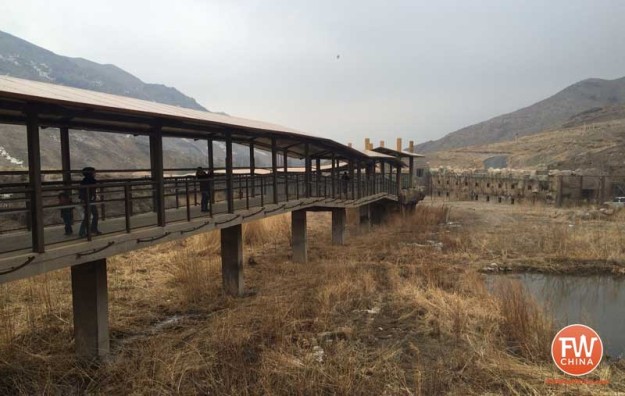
The animals here included tigers, lions, bears, and wolves among others. The spaces for them to roam were large, which was encouraging and since the weather was a bit cold, many of them had decided to stay inside.
It was clear from the few animals that were around that they were used to being fed by the visitors.
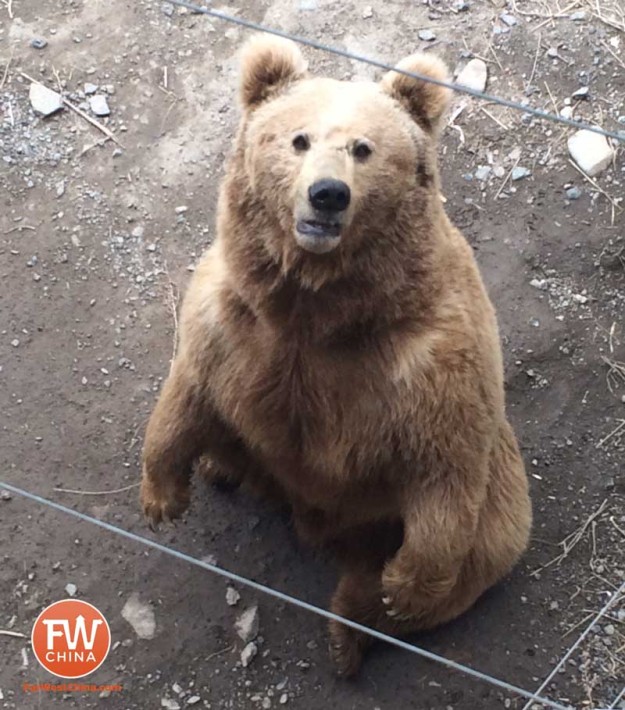
“Have you any food to spare?” says Mr. Brown Bear
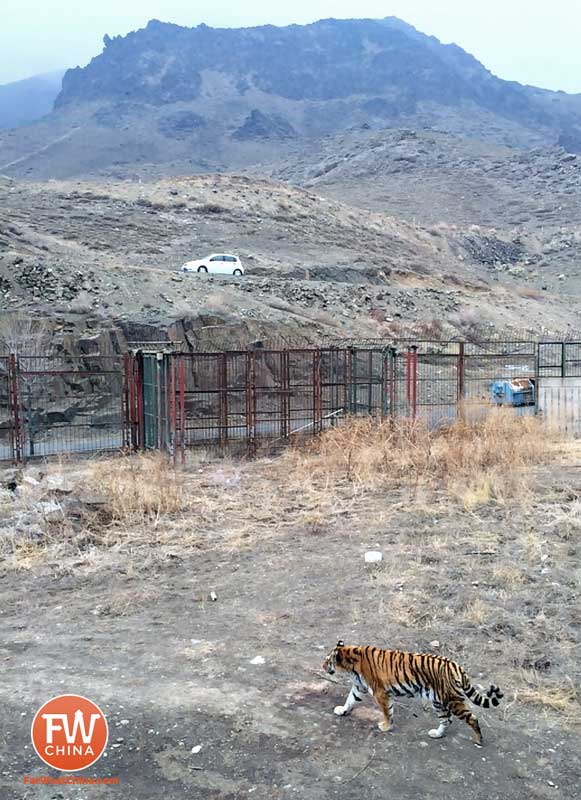
It was unclear how well the animals were cared for but only a handful looked terribly unhappy. Again, not a single zoo keeper was to be seen anywhere and it didn’t seem like safety was a huge concern.
To my surprise, a hatch leading down toward the bear and wolf enclosures had been left unlocked.
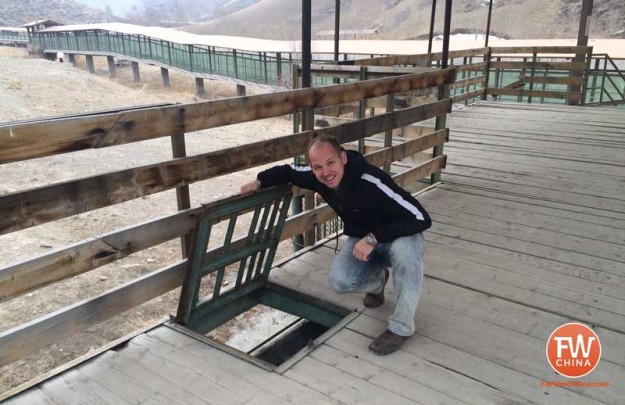
Since the wind was beginning to pick up, carrying from the Tianshan the bite of cold air, our group decided to stop for lunch. We ended up finding our way into an abandoned cafe next to the monkey exhibit that looked like it hadn’t been used in years.
We had brought out own lunch thankfully, because there wasn’t a place anywhere to buy food. The old cafe was covered in dust and felt creepy. Again, it was like the facilities in Jurassic Park that weren’t getting a chance to serve its purpose in the park.
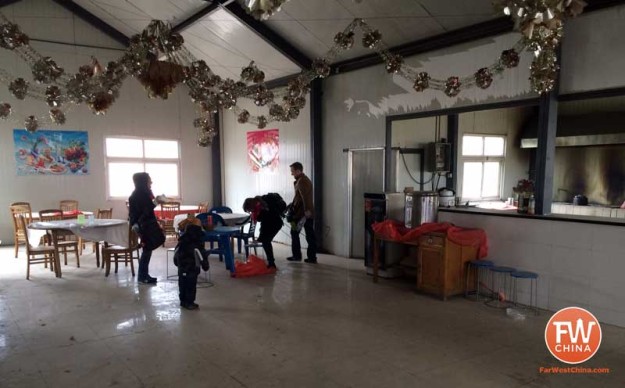
As our group left the zoo, we all reflected on the odd experience together.
Expectations for zoos in China have never been high but this safari park seemed better than most. It certainly wasn’t on par with the San Diego Zoo but at least the animals weren’t being held in tiny cages.
The biggest disappointment was the park facilities, all of which looked like they were 30 years old. Despite being a “AAAA Scenic Spot” in China, a designation that usually means more funding, this park didn’t look like it had ever hired a maintenance staff.
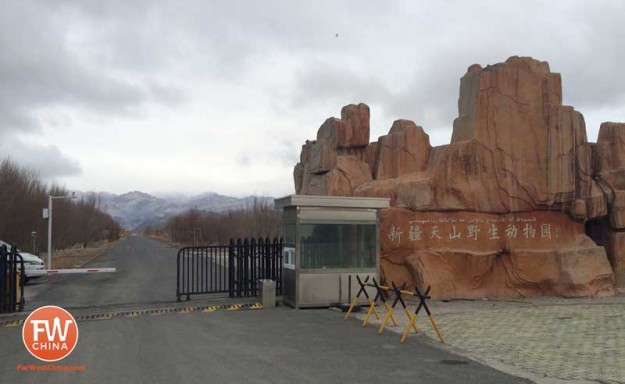
Despite all of this, I have to confess that my 3 year old son had a blast. We’ll be making a trip back in the warmer months to see how things are different but for now I’m just enjoy being able to tell the story of how we entered – and survived – a modern-day Jurassic Park.
Travel Details
For those who wish to make their own trip to the Xinjiang Tianshan Safari Park (新疆天山野生动物园 Xīnjiāng Tiānshān Yěshēng Dòngwùyuán), you can either hire your own car/driver or take bus 313 from the gate of the old Urumqi zoo called “Nan gong yuan” (南公园). Buses start running at 10:30am Beijing time and the last bus back to Urumqi leaves around 4pm.
Once you arrive, the fees are as follows:
- Entrance Fee: 70 RMB/adult, 40 RMB/child (shorter than 1.2 meters)
- Car Fee: 90 RMB/car
- Shuttle Fee: 30 RMB/person
It takes about 1.5 hours to travel between Urumqi and the park, plus you’ll want at least 2-3 hours to wander the park itself.


